Trees are easy. I could not be without them, though arguably there could be a few too many in this garden. My wife remarks that our views are obstructed, but we sit low between rather tall hills, so there is not much view to spoil, I think.
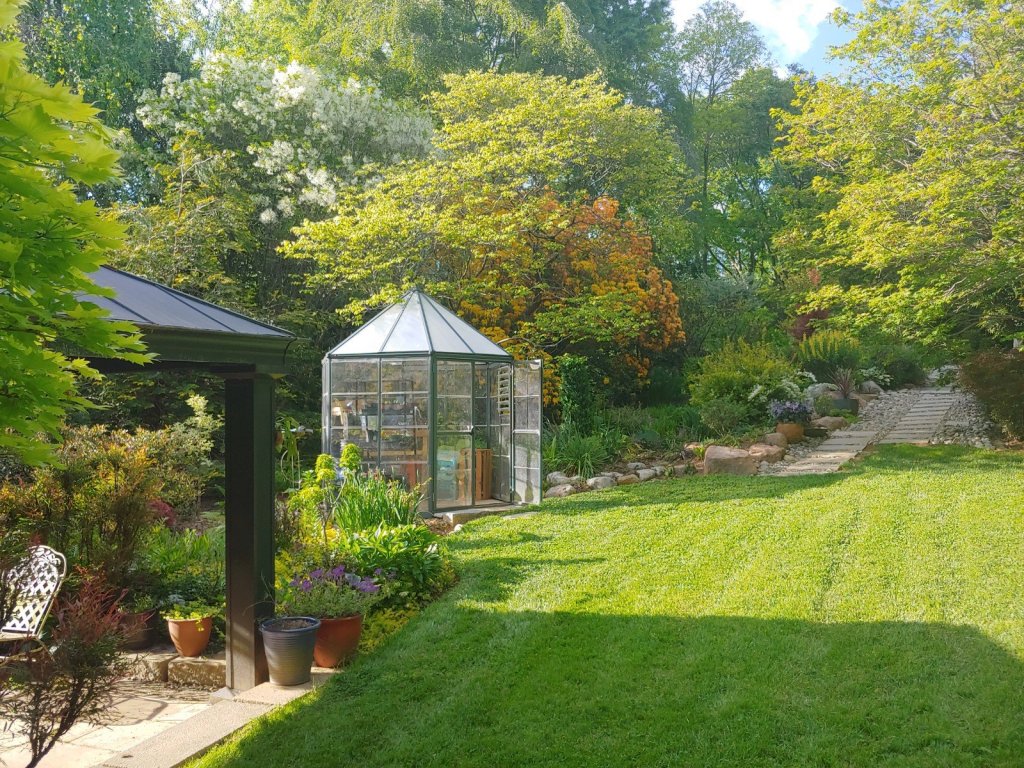
There are a few dozen Japanese maples in the garden, but also dogwoods, redbuds, two magnificent beeches, handfuls of magnolias, a katsura, and more. Many of the trees are now into their third decade, so where there was once sunny lawn is now delightfully shaded garden. This number of trees limits views within the garden, but rather than shrinking the space, visitors remark that the garden must be larger than its acre and a quarter. Of course, this is an unintended benefit.

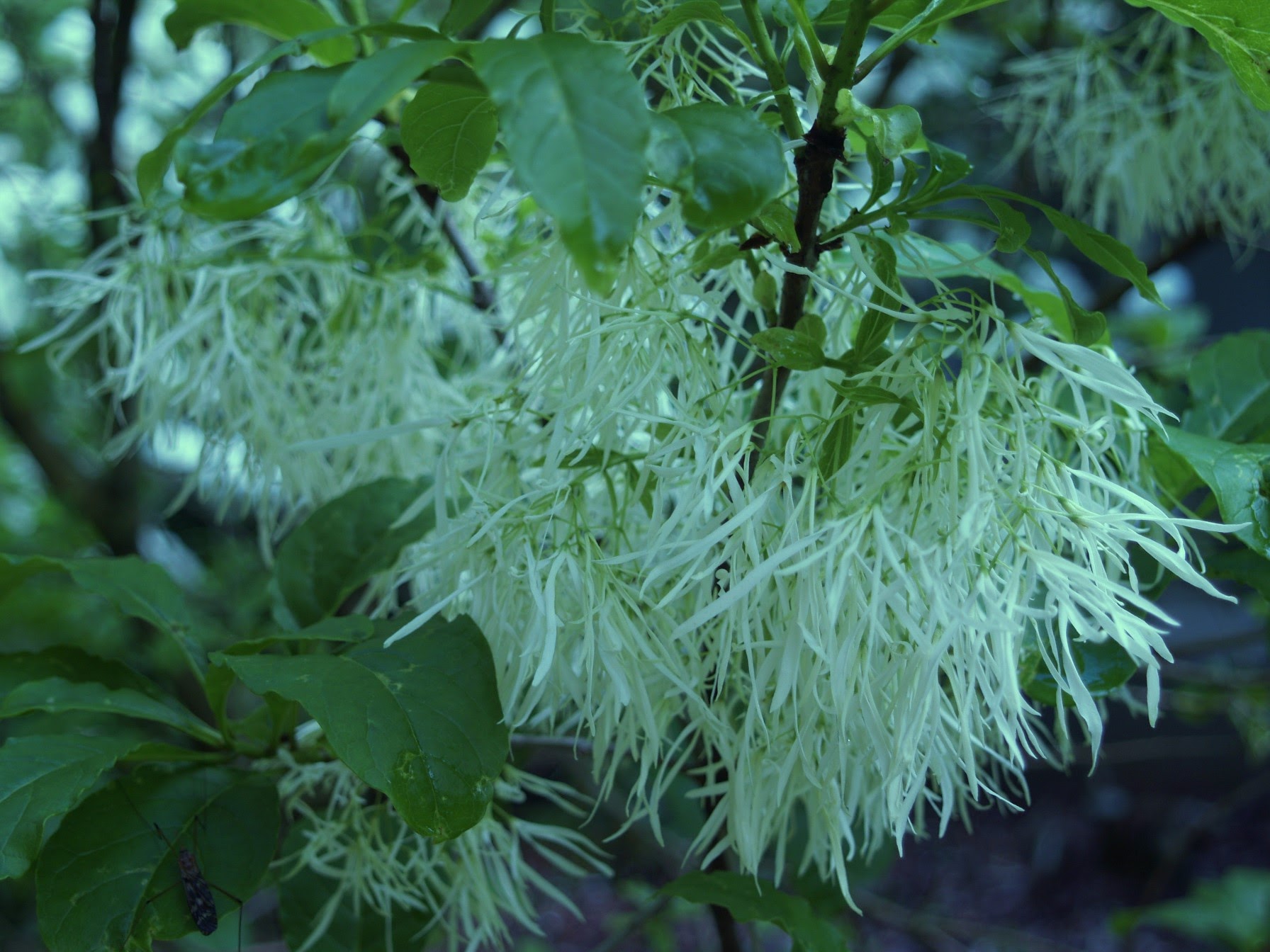
I did not mention crape myrtles, of which there are a handful. I cannot treasure these as I do a redbud, dogwood, and certainly not as much as even the least favored Japanese maple. But, two dark leafed crape myrtles planted last autumn are gaining favor, growing quickly in the damp lower garden that demands the mass of a tree that is not overly broad in its spread. The summer flowers are a bonus, and I value any tree that survives the dampness.
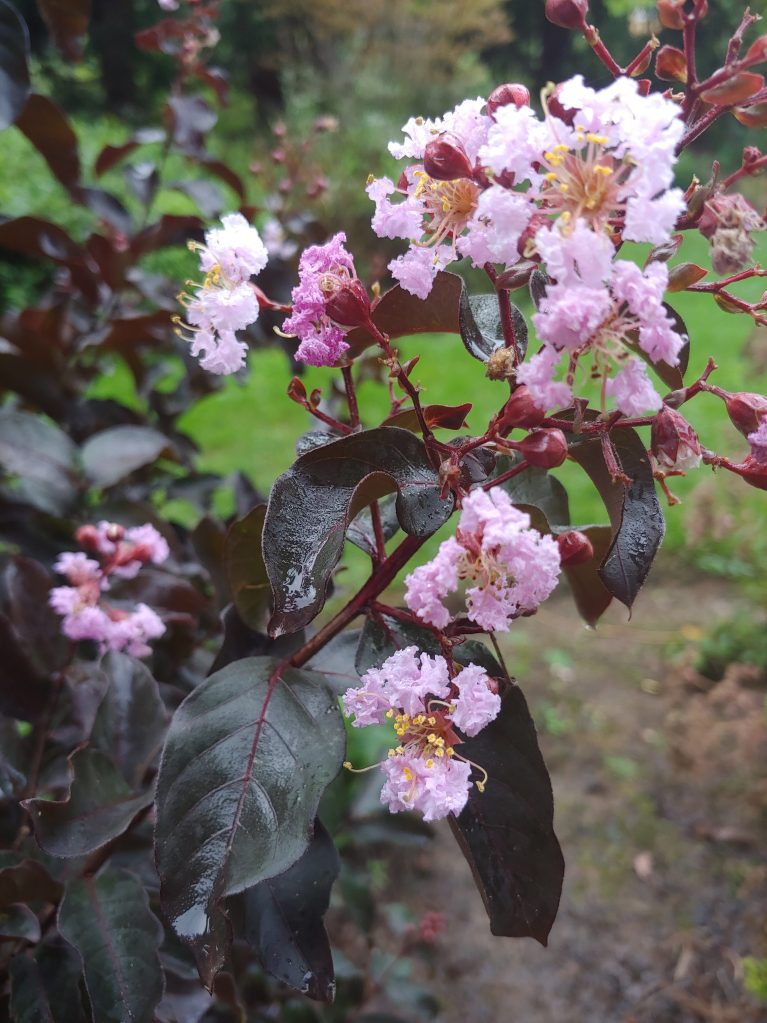
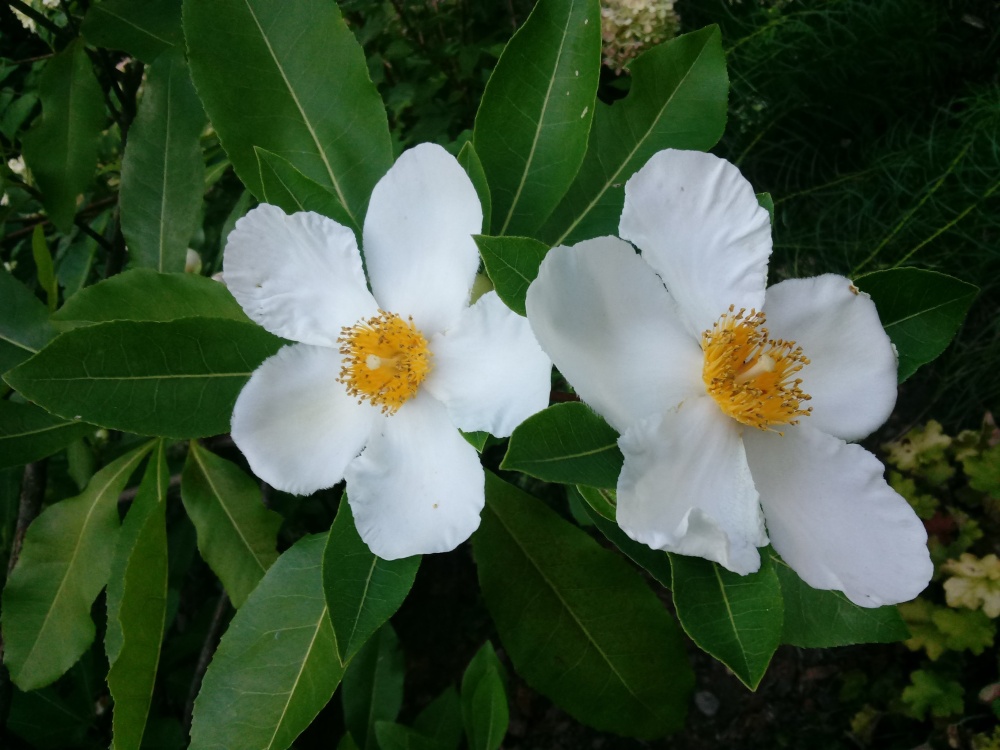
While evergreen, the leaves of gordlinia (xGordlinia grandiflora, above) are a horrid sight by midwinter, even when the season is mild with few severe lows. Then, browned foliage is not easily stripped, so the unsightly leaves remain until spring’s growth pushes them away.

Gordlinia is a hybrid between Franklinia and gordonia, and more similar in appearance to a large, shrubby Franklinia. The multi trunked gordlinia was planted as a second choice when a tree of acceptable size could not be found to replace a prized Franklinia (above) that perished in the damp lower garden. The gordlinia was placed in drier ground to assure its survival. Its abundant, yellow centered, white blooms in midsummer are nearly identical to Franklinia’s, and the autumn coloring of the evergreen foliage is quite attractive. So, gordlinia’s attributes outweigh the minus of several months of browned leaves.

A variegated sport of ‘Rising Sun’ rebud (Cercis canadensis ‘Rising Sun’, above) is thriving after a late autumn planting a year ago. The foliage and variegation are slightly faded (below) from when I discovered the tree in a field of ‘Rising Sun’ in the North Carolina mountains, but that will come as the tree settles in. Certainly, this redbud will not be the equal of ‘Rising Sun’ or other colorful recent introductions, but it is one-of-a-kind and a reminder of a valued business relationship that I will fondly recall long after I retire.
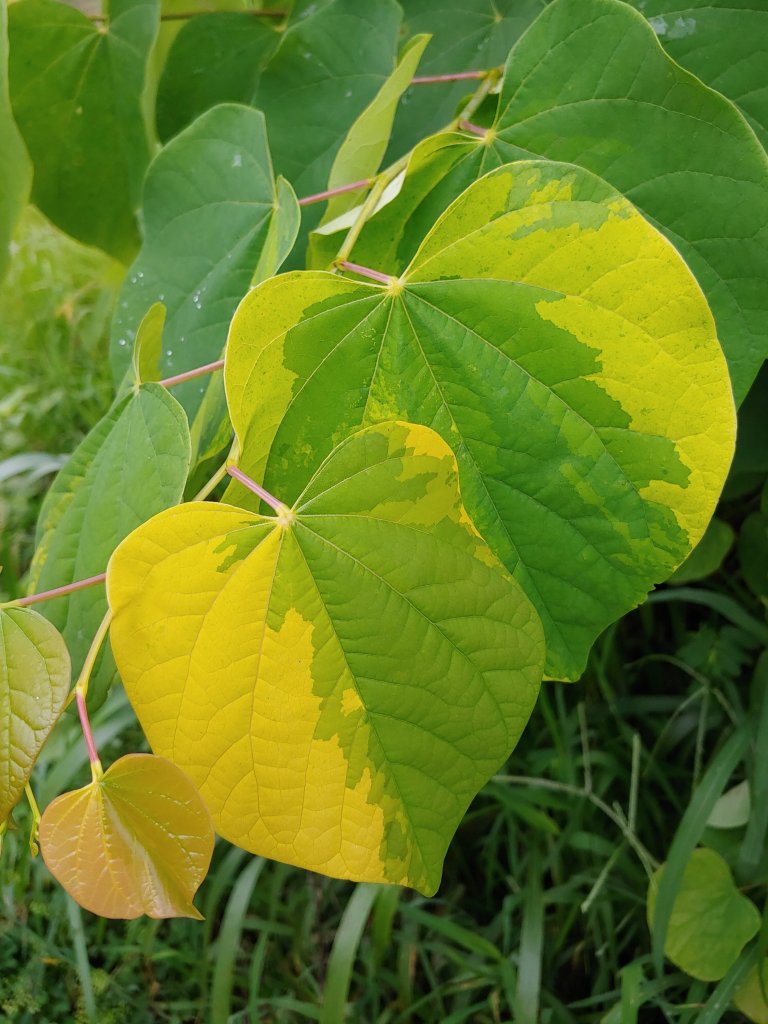
With trees like that, you can fit many into the same garden. Some of our redwoods are hundreds of feet tall. They do not obstruct the view. They are the view.
After a slow start when a purple leafed European beech didn’t grow more than a few inches a year, it has become a sixty foot behemoth. Still, we have no trees to compare to west coast redwoods and Douglas firs. This year I chopped out a declining Blue Atlas cedar, but it was probably for the best since it would eventually grow out of scale to the rest of the garden. Most of the trees in the garden are twenty feet wide and tall, or smaller with a few exceptions, so it’s easy to cram more trees into this space.
Yes, I know how that goes. My colleague down south wanted several tree trunks in the garden of his parents’ home, so installed a few lemon gum (eucalyptus). They get quite tall, but are elegantly lean. They work like European white birch, but are more compatible with Spanish architecture and Southern Californian landscapes. Unfortunately, they are huge now, but still look great.
Please post more photos of your trees and shrubs, and tells where you plant them so that they survive! Any winterberries? What kind of Japanese Maples? Photos of your Japanese Maples, please!
The soil in my garden is unexceptional, but I almost always plant without amending. I pay most attention to sun exposure or shade and must be aware that some areas of the garden have very damp soils that limit what can be planted. But, most trees are very adaptable.
I’ve planted winterberries in both sun and shade and recently wrote about the lack of berries for several years in the absence of a male pollinator. If you scroll to the bottom of the main page you can search for Japanese maples. There are several postings that feature them exclusively.
Nice pics and interesting post. This kind of info, such as comparisons between gordlinia and Franklinia, based on personal experience, is hard to find. I like reading about your garden’s progress over time. You have a great selection of trees. I wonder if you would recommend the golden rain tree, though. I have one that was a gift from a good friend years ago. It’s a good tree, but the thousands of seedlings it produces keep me from giving it to anyone.
I think that Golden Rain can be acceptable when planted in a lawn. With more shade in recent years there are now only hundreds of seedlings, not thousands. It is also plagued by dead wood, regularly dropping small branches. I am the first to recommend alternatives to overly common maples, but golden rain is not near the top of my list.
That is such a cute greenhouse. Can you tell me where you got it?
I bought this greenhouse from Costco, but I’ve seen it on Amazon.